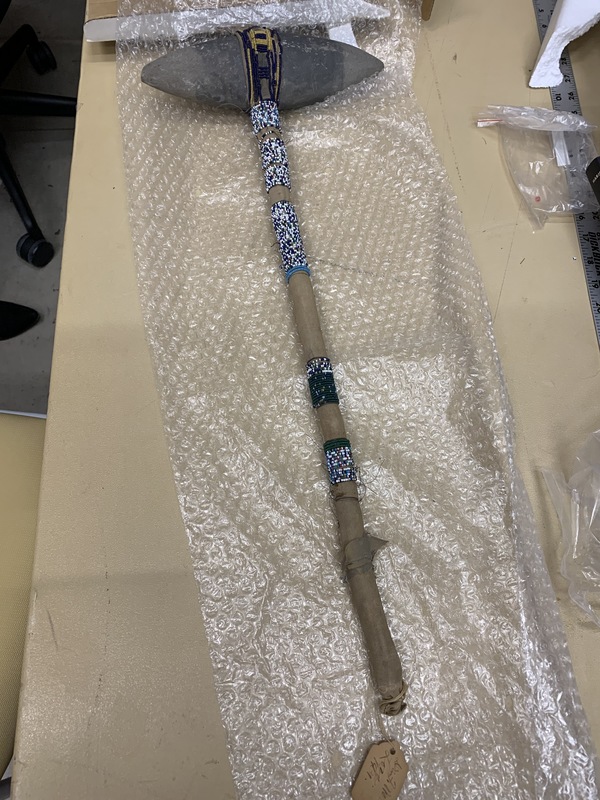War Club by Connor O'Neill
This ceremonial war club, collected and loaned to the college by Dr. Freeman Ward in the year 1931, has an interesting, though slightly ambiguous, story. As the majority of our collection comes from the Smithsonian, along with their subsequent records, this stands out as a sort of oddity in our collection. Not only is this piece an oddity due to how it was obtained but also due to the type of object itself. As most of our collection is an assortment of basketry and pottery, a war club feels very out of place. So, how did it get here? The answer lies in its collector, Dr. Freeman Ward. Dr. Ward, a native of Yankton, South Dakota was a professor in the Lafayette college Geology department during its nascent stage. Dr. Ward's education began at a denominational college in Yankton founded by his father. Following his undergraduate study he spent two years receiving education from Yale University. Five years later he was granted a Doctorate in Philosophy of geology from that same university. Though his focus was never directly in Anthropological study his travels and contact with the tribes of South Dakota most likely led to his collection of his loaned piece. Prior to his position as a founding member of the geology department he began his geologic focused career as an oil surveyor in his home state. Two specific locations he surveyed relevant to this piece were the Rosebud and Pine Ridge Indian Reserves. Home to the Rosebud Sioux tribe and the Oglala Sioux respectively, these two branches of the Lakota are most likely where Dr. Ward collected his piece. Though the absence of records prevents exact clarity on why, where, and from whom this piece was acquired, its connection to Dr. Ward allows us to retrace its steps.
This piece is an assumed example of a ceremonial war club. We are able to infer that it was never intended as an actual weapon due to the ratio of the club's stone head to its handle. Surrounding the wooden handle is a linen covering that beads are sewn into, with gaps surrounding the locations where the hands may be placed. It is unknown whether or not these gaps were placed intentionally but it is unlikely that this is due to the use of this piece likely being ceremonial. Clubs of this sort began with much shorter handle length due to the fact that they predate the presence of horses. As horses were introduced, the handles of these clubs grew in length to accommodate combat from horseback.

